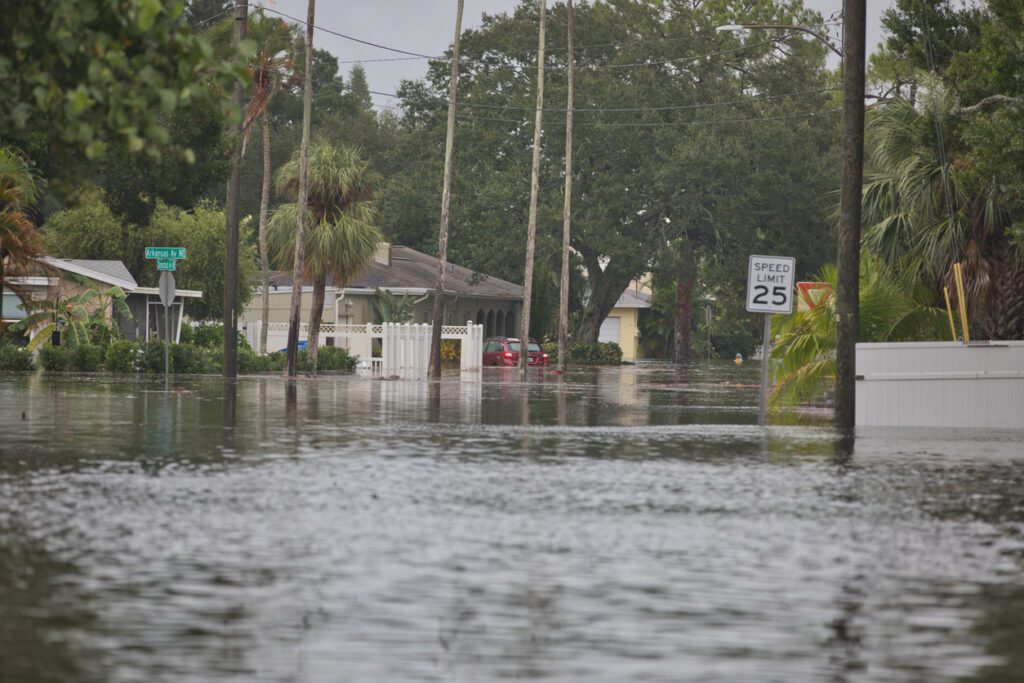Imagine standing by the sea, admiring the rhythmic dance of the waves. Then, suddenly, those waves rise, driven by a powerful force, and crash onto the shore with a vengeance. This is the essence of a storm surge—a formidable wall of water that can transform serene coastal landscapes into scenes of chaos.
What Is a Storm Surge?
A storm surge is an abnormal rise in sea level caused by powerful winds from hurricanes or cyclones pushing water toward the coast. It’s like a giant, invisible hand lifting the ocean and hurling it toward the land. Unlike regular tides influenced by the moon, storm surges are driven by intense atmospheric conditions.
How Are Storm Surges Formed?
During a hurricane, the strong winds swirl around a central point known as the eye. These winds create friction with the ocean surface, causing water to pile up. The low pressure at the hurricane’s center exacerbates this effect, allowing the sea level to rise even further. The result? A massive surge of water that can travel far inland, wreaking havoc on anything in its path.
Storm Surge vs. Other Types of Flooding
It’s crucial to differentiate storm surges from other types of flooding. While regular flooding might occur due to heavy rainfall or overflowing rivers, storm surges, driven primarily by the wind and pressure changes associated with severe storms, can happen suddenly and with little warning. This suddenness underscores the urgent need for preparedness, making them especially dangerous and the need for preparedness immediate.
Impact on Coastal Communities
Storm surges can have devastating impacts on coastal communities. Imagine waking up to find the streets of your neighborhood transformed into rivers, homes submerged, and the landscape you once knew erased by the relentless power of water. This is the harsh reality faced by many during such events.
For instance, in 2005, Hurricane Katrina brought a storm surge of over 25 feet, leading to the catastrophic flooding of New Orleans. Similarly, Superstorm Sandy in 2012 caused a storm surge of 9-12 feet, resulting in widespread destruction in New York and New Jersey.
Measures to Protect Against Storm Surges
Preparation is vital when it comes to storm surges. Coastal communities can implement several measures to safeguard themselves:
- Evacuation Plans: Having a clear, well-communicated evacuation plan can save lives.
- Seawalls and Barriers: Constructing barriers can help mitigate the impact of incoming water.
- Community Awareness and Education: Educating residents about the dangers of storm surges and how to respond can make a significant difference.
Real-Life Examples of Devastation
History has shown the destructive potential of storm surges. The 1970 Bhola cyclone in Bangladesh, one of the deadliest cyclones on record, resulted in a storm surge that claimed over 300,000 lives. This was due to a combination of factors, including the low-lying topography of the region and the lack of early warning systems. More recently, Hurricane Dorian in 2019 brought a storm surge of 18-23 feet to the Bahamas, causing catastrophic damage. The surge, combined with the slow movement of the storm, led to widespread flooding and destruction.
These examples are stark reminders of nature’s power and the importance of preparedness.
The Role of Climate Change
Climate change is expected to influence the frequency and intensity of storm surges. Rising sea levels and more intense storms mean surges could become even more devastating. This underscores the urgent need for global action to address climate change. The time to act is now, and your contribution can make a significant difference in mitigating the impacts of storm surges.
In conclusion, understanding storm surges is crucial for anyone living in or near coastal areas. By educating ourselves, preparing adequately, and advocating for climate action, we can better protect our communities and weather the storms that lie ahead. Are you ready to take action and be part of the change?
References:
Storm Surges – Office of Disaster Preparedness and Emergency Management. https://www.odpem.org.jm/storm-surges/
Nederhoff, K., Hoek, J., Leijnse, T., Caires, S., & Giardino, A. (2021). Simulating synthetic tropical cyclone tracks for statistically reliable wind and pressure estimations. Natural Hazards and Earth System Sciences, 21(3), 861-878.
Note: Main Photograph for this blog:
The main photo included in this blog post is from the iStock.com library.
Photographer: Glenn Richard
Stock photo ID:1952366942
Upload date: January 23, 2024
Location: United States
Categories: Stock Photos|Flood
Description: A community covered with storm surge by Hurricane Idalia in Shore Acres, a neighborhood in St. Petersburg, Florida.
Thank you for reading this blog post. If you have any questions or comments, please leave them in the Comments section below.
Copyright © 2019. I Don’t Know All The Answers, Nikki Mastro.
All of my photographs and documents are Copyrighted.
The main photo included in this blog post is from the iStock.com library.
No part of this website, including text, photographs, and documents, may be reproduced, stored in a retrieval system, or transmitted in any form or by any means without written permission from the copyright holder. All unauthorized use is strictly prohibited. If you choose to copy or share any information from my site, you must provide a link to the source. I appreciate your cooperation.
For further information concerning “I Don’t Know All The Answers.”
– Website and Blog: https://www.idontknowalltheanswers.com
– Facebook: https://www.facebook.com/Nikki.L.Mastro/
– Instagram: https://www.instagram.com/i_dont_know_all_the_answers/
– Linkedin: https://www.linkedin.com/in/nikki-mastro-05455a3a/
– Youtube Channel: https://www.youtube.com/@idontknowalltheanswers1954

